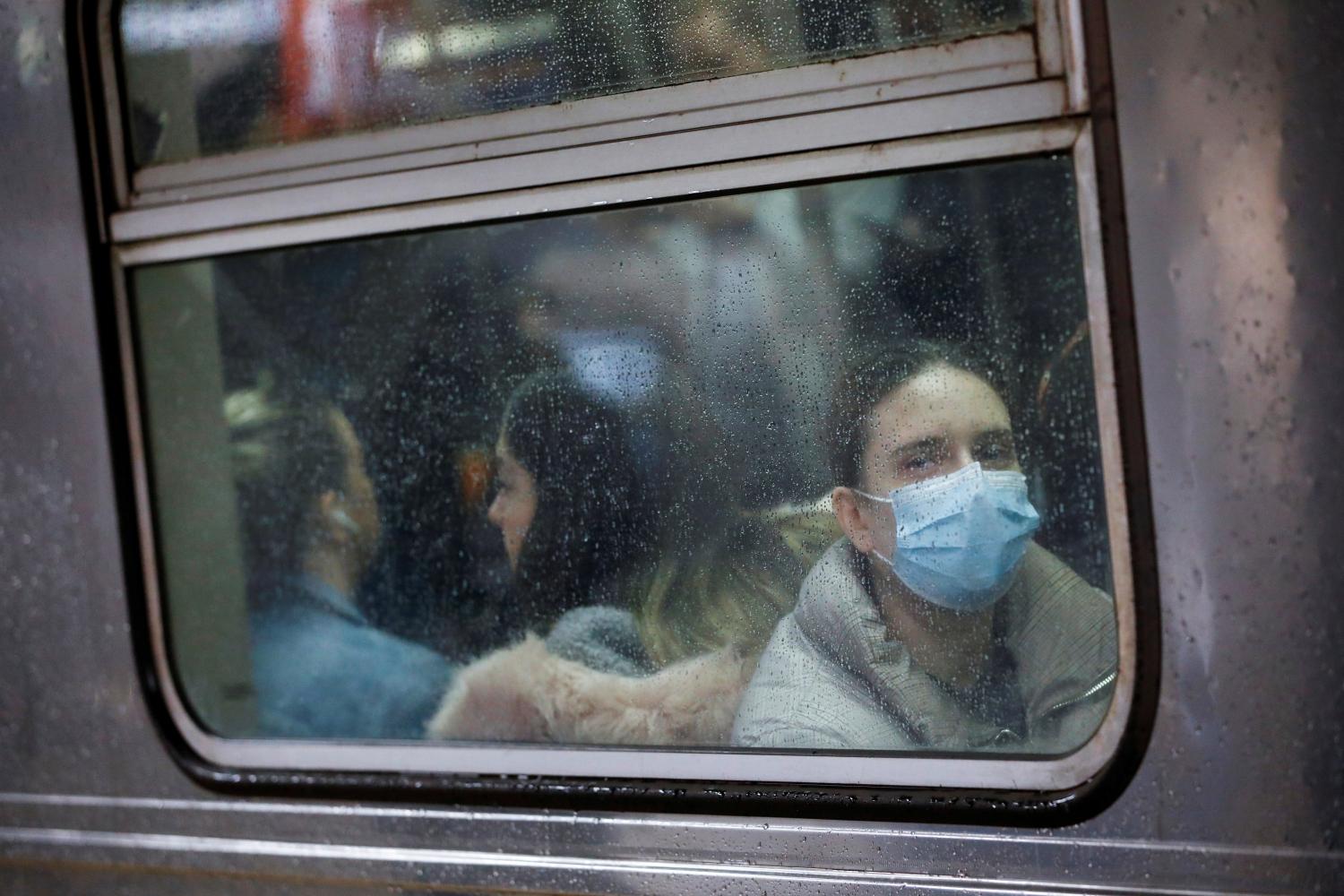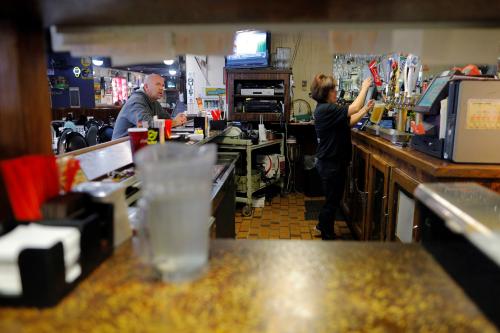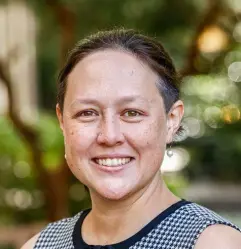As the world closes in on itself to contain the coronavirus, people are rightfully worried about how the places where they live are affecting their health and well-being. Is it safer to be in a rural area to avoid the seemingly perilous density of a metropolis? Or in a city where health care and other resources are close at hand? As the pandemic expands nationally—upending life in dense urban areas and remote hamlets alike—there are few satisfying answers.
The coronavirus’ origin and diffusion emerged from rapid globalization and urban growth, which facilitated transmission from animals to humans, person to person, and country to country. While this provides ample fodder for xenophobia and renewed critiques of densely concentrated living, the connectivity of people and places may matter now more than ever. Local responses to the pandemic are revealing that in the midst of mandated distancing, the economic, physical, social, and civic structures of communities significantly influence places’ ability to cope with the immediate crisis—and may be a strong predictor of their resilience and recovery in the months to come.
A strong economic ecosystem lays the groundwork for recovery
Last November, the Bass Center for Transformative Placemaking released a framework describing the interconnected elements needed to build vibrant and healthy places. These are now being tested in real time.
Firstly, the framework emphasizes the importance of regionally connected, locally empowering, and innovative economies. But right now, the economy looks uncertain. As our Brookings colleagues and others have pointed out, what makes cities economically successful also makes them dangerous in a pandemic. Places that are more regionally connected have more exposure to the virus. Places that support strong clusters of local businesses are seeing unprecedented closures. Places of innovation, from universities to research institutions, are shuttering their doors.
Yet these supposed fragilities may prove to be these places’ strongest assets. While all of the nation’s hospitals are facing shortages of staffing and equipment, regionally connected places have relatively more access to both. Locally networked economies are already demonstrating their tenacity, with cities from Seattle to New York City to Birmingham, Ala. stepping in to provide immediate relief to small businesses and lay the groundwork for longer-term relationship building. Innovation economies—where major universities, hospitals, medical research institutes, and industries cluster and connect—are not only providing physical places for recovery, but are working to defeat the virus by developing a vaccine and identifying places and populations with the highest need.
For many communities and populations, the economic impacts of COVID-19 are likely to be dire. But local efforts that nurture and strengthen connectivity, support workers, and foster creativity will be vital to mitigating the fallout.
During a pandemic, physical connectivity can be a drawback and an asset
The physical landscape of our communities—the ability to get from point A to point B, the proximity of resources like grocery stores and green space, and the mix of housing, businesses, and amenities—is another cause of coronavirus-induced unease. Crowded public transit systems furthered the spread of the virus. Closely packed housing and group living quarters have accelerated transmission, disproportionately affecting older adults and people with compromised health. And crowded grocery stores, along with empty shelves, are heightening stress and hostilities.
Despite serious downsides, the physical qualities of densely connected places can also make life amid social distancing more livable. Walkable and bikeable places are easing the isolation of quarantines and enabling people without cars to move about. Public parks are giving people a respite for fresh air and exercise while maintaining social distance. And while access to grocery stores remains inequitable in many places, communities are finding ways to bring food to every corner of their cities, as schools offer free pop-up grocery stores and neighbors volunteer to deliver food to vulnerable populations.
Only in urban areas, too, is there sufficient market density to keep restaurants and other small businesses afloat through takeout and delivery service. Some neighborhoods are even seeing their street vendors—who typically sell food or goods on public corners—volunteer to become trusted public health ambassadors.
As the virus moves through cities, suburbs, and towns alike, the physical density and design of those places will continue to influence how, and how well, they overcome the pandemic’s short- and long-term effects.
Social distancing doesn’t have to mean social disintegration
Our collective social life, too, seems to be under siege given the unprecedented requirements for distancing. The Bass Center’s work and that of many others highlights the importance of supporting vibrant communities through free programming, community events, and inclusive spaces that build trust between neighbors and bridge socioeconomic divides. Such events are now being cancelled or postponed, and may not be returning for quite some time.
Yet social cohesion is playing a critical role in alleviating the effects of the crisis. In neighborhoods across the country, both established and newly formed neighborhood response teams are helping at-risk residents with errands, child care, and even emotional support. In places like Baltimore, residents describe such responses as a logical extension of the social fabric and commitment to community organizing that has long existed between neighbors. Even “third spaces” like restaurants are transforming into community kitchens to provide free meals to those in need, while distilleries convert their production lines to make hand sanitizer.
These and similar efforts will allow communities to emerge from the pandemic with stronger networks of social cohesion that will serve them on ordinary days as well as for future crises.
Hyperlocal governance is more critical now than ever
With fragmented federal and state-level public health responses to the crisis, hyperlocal governance structures are more essential than ever. The actions of civic groups—from neighborhood associations to business improvement districts—are reinforcing that locally organized, inclusive, and networked communities will bring benefits, resources, and an organized voice to residents.
At the neighborhood level, place governance organizations are continuing to support vulnerable populations during the crisis, using outreach teams to connect people experiencing homelessness to services. They are ensuring that communities remain clean and are providing resources for crisis management. They are playing a critical role in helping small businesses grapple with mandated closures, disseminating information about ways customers can support those businesses even if they can’t physically patronize them.
In underresourced neighborhoods that may not have dedicated governance structures already in place, community coalitions from West Oakland, Calif. to Denver to New York City are mobilizing to create new formal networks to deliver food, distribute updates about businesses and services, and connect people with child care and other resources. Such structures will provide a critical backbone for economic recovery, particularly in vulnerable neighborhoods and those that have been disproportionally impacted by coronavirus-related xenophobia. And they may lay the groundwork for sustained civic engagement to address the entrenched inequities that remain after COVID-19 has come and gone.
The promise of transformative placemaking
In December 2018, advocates, design professionals, public health experts, and urban futurists gathered with Project for Public Spaces for Placemaking Week in—of all places—Wuhan, China, the original epicenter of COVID-19. That convening concluded with a shared declaration:
Everyone has the right to live in a great place, and the right to make the place where they already live better.
The current crisis crystalizes the potency of that statement. Our long-term health and well-being depend on our willingness to invest in the economic, physical, social, and civic structures that will allow us to make good on transformative placemaking’s promise.
The Brookings Institution is committed to quality, independence, and impact.
We are supported by a diverse array of funders. In line with our values and policies, each Brookings publication represents the sole views of its author(s).










Commentary
The qualities that imperil urban places during COVID-19 are also the keys to recovery
March 25, 2020